 |
I arrived at the Castillo de San Marcos secure in a number of prejudices. First and foremost was that the Spanish of the 16th through 19th centuries were just a bunch of meanies, whose colonial empire was somehow more despicable than that of, say, England's. I have since realized that this perception came about thanks to a couple decades of reading Bernard Cornwell's Sharpe series of novels, in which the Spanish uniformly do not come off well. |
 |
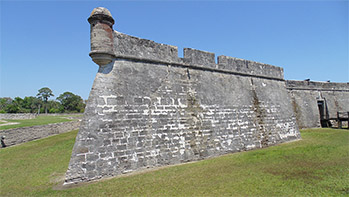 |
|
 |
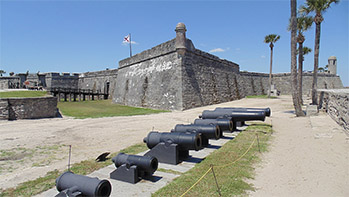 |
 |
Added to this was a predisposition against the guérite, the unassuming little sentry box that I had decided was a pox on the sacred body of the starfort, and which looms rather large in the Castillo de San Marcos' story. Yes sir, I was ready to dislike the Castillo de San Marcos from the get-go. I was additionally put off by the prospect of sharing my starfort experience with others. (Is all of this sounding childish yet?) |
|
 |
With the exception of my experience at Fort McHenry in Baltimore, the starforts I had visited had all been virtually devoid of humanity, leaving me free to prance about naked if I so chose (I have yet to so choose, but you get my point). The Castillo, meanwhile, is the tourist destination for this part of Florida, so it was guaranteed that there would be hundreds, if not millions, of other starfort visitors of varying levels of dedication standing alongside me. |
 |
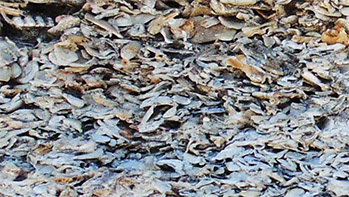 |
|
 |
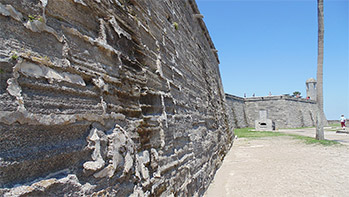 |
 |
And of course my opinions all changed the instant I laid eyes on the Castillo de San Marcos. On an absolutely gorgeous, warm, blue-sky day of the sort that Floridians no doubt take for granted but the rest of us find completely miraculous, this breathtakingly imposing chunk of 17th century colonial power proved itself to be far above and beyond any of my petty preconceptions.
It is so very different from any other starfort in the United States. |
|
 |
The US is a land of scientific fortification. By the time America was building its own starforts along it's east coast to defend against the old world powers, fortification had advanced to a relatively refined level thanks to advances in artillery, resulting in low-walled, mostly compact starforts. What is difficult to see is difficult to pulverize with a ship's guns.
The Castillo de San Marcos, conversely, wanted to be seen. |
 |
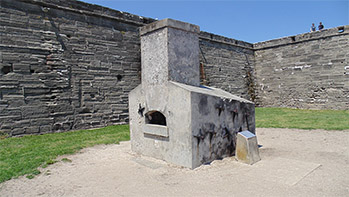 |
|
 |
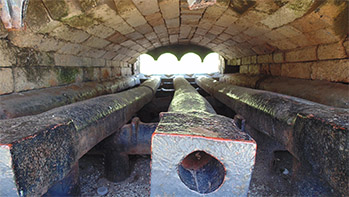 |
 |
Spain's whole point in building the Castillo was to strike fear and respect into the hearts of their colonial underlings and enemies alike. Naval artillery of the era in which the Castillo was built was fearsome, but far from accurate or devastating to shore fortifications, particularly those constructed of Coquina Stone. The garitas that I held in such low regard were thus not the pointless death traps that I had imagined, but a reasonable manner by which to keep an eye on anyone approaching the fort. |
|
 |
There were plenty of other folks attending the Castillo during my visit, but as you will see from many of the pictures that made it onto my memory card, this starfort is big enough to comfortably swallow a thousand people, as did happen on more than one occasion when the British came to St. Augustine in the 18th century: The town's entire population of 1300 (plus the fort's garrison of 200) lived in the Castillo for months at a time. |
 |
 |
|
 |
 |
 |
So yes, the Castillo de San Marcos single-handedly changed my opinion of the Spanish Empire. I'm ready to convert to Catholicism and start over-decorating my artillery pieces and starforts, which will be named after an interminable parade of saints!
Okay perhaps not, but I did come away with a newfound respect for the projection of Spanish power, and an appreciation for the place that Spain, and the Castillo, hold in America's history.
Each of the images on this page are but thumbnail representations of full-sized pictures, which, along with further situational musings on my part, can be viewed with but a click of the mouse. |
|
|
 |
 |
|
 |
|


